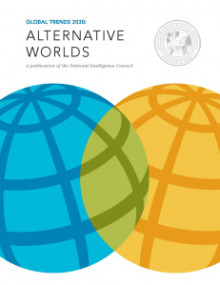Earlier this month, we blogged on looking to the future – it is a subject that interests all of us, whatever our walk of life. We looked at “life imitating art” in the sense of fiction writers – and especially science fiction writers – having a unique knack for looking into the future. Many of you who follow this website or my tweets have asked, “Does our government do this – look into the future?” The answer is a resounding yes!
The National Intelligence Council (NIC) has been in existence for over three decades and represents the primary way the U.S. intelligence community (IC) communicates in the unclassified realm. Initially a “wholly-owned subsidiary” of the Central Intelligence Agency (CIA), the NIC now works directly for the Director of National Intelligence and presents the collective research and analysis of the entire IC, an enterprise comprising 16 agencies with a combined budget of over $80 billion. In a sentence: There is no more comprehensive analysis of future trends available anywhere, at any price. Global Trends 2030: Alternative Worlds is the latest edition of its analysis. It’s not an overstatement to say this 160-page document represents the most definitive analytical look at the future security environment.
The comprehensive quadrennial report forecasting global trends that have a major impact on our world, Global Trends 2030: Alternative Worlds is the definitive U.S. Government document that looks to the future. In shorthand it is GT2030. Global Trends 2030 helps us have an informed and well-nuanced view of the future. This is not as easy as it sounds, for, as John Maynard Keynes famously said in 1937: “The idea of the future being different from the present is so repugnant to our conventional modes of thought and behavior that we, most of us, offer a great resistance to acting on it in practice.”
I’ve reported on Global Trends 2030 on the Defense Media Network website. Read the first article of the series here:
http://www.defensemedianetwork.com/stories/global-trends-2030-what-it-is-and-why-it-matters/


